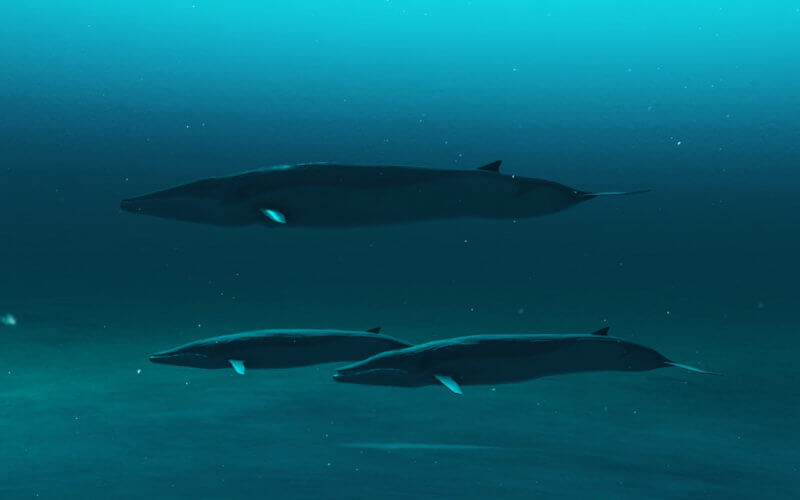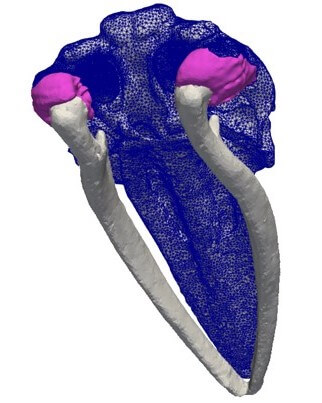
Baleen whales — some of the world’s largest animals — do not have external ears like humans.
Cal State Fullerton biology graduate student Madison Wilson became intrigued by how these marine mammals hear and communicate over vast distances.
For the past two years, she has been seeking answers, such as whether their jaws work like huge tuning forks to amplify sounds. Her marine biology research centers around the biomechanics of whale hearing — specifically how the lower jawbone, or mandible, impacts the sound arriving at the whale’s ears.
“Out of the two living suborders of whales, we know a lot about the hearing of toothed whales, such as orcas and dolphins,” Wilson said. “These animals have large fat bodies that are embedded in their lower jaws and connected to their inner ears. Their heads act as antennae, with sound funneled through these fat bodies into their ears.”
In toothless baleen whales, such as humpback, gray and fin whales, they may use bone conduction as their main method for hearing, explained Wilson, whose study is focusing on the fin whale.
“My research aims to understand if the jaw has an important role in the hearing of baleen whales,” said Wilson, whose research mentor is Misty Paig-Tran, associate professor of biological science.
Paig-Tran’s FABB (Functional Anatomy, Biomechanics and Biomaterials) Lab uses a blend of anatomy and engineering techniques to answer biological questions about performance in marine animals. For her study, Wilson is collaborating with marine scientists at San Diego State University and UC San Diego.
“The main question we are asking is: Do baleen whales amplify sounds?” Paig-Tran said. “This may seem like a straightforward, easy-to-answer question, but when you think about how to test this, there are a ton of logistics that need to be solved.”

Why is this research important?
We don’t understand a lot about the way baleen whales hear, and why the differences in anatomy and hearing range developed between the two living suborders of whales. This research helps us understand more about how they hear, and eventually, why they have evolved such different hearing pathways. We are using high-level software to accomplish this, and with the help of this software, we are working to demonstrate the validity of such simulations in biological experimentation.
How did you get interested in this project?
As an undergraduate student at the University of Washington, where I earned my bachelor’s degree in oceanography, I led a team that was building an underwater hydrophone (an underwater device that detects and records ocean sounds). One of the students had written a paper on whale hearing and the various ways in which they funneled sound into their inner ears. I became fascinated.
What is interesting about this research?
Because baleen whales do not have external ears, this sense is internally modulated. Toothed whales, like the orca whale or killer whale, hear a much larger set of frequencies than baleen whales, who hear only at the lower end of the frequency range. This difference in hearing capability makes their different anatomy even more fascinating as we unravel the functionality.

Do you have any findings?
Preliminary findings suggest that the jaw does not have an important role in fin whale hearing. However, through this study, I hope to validate the use of software in complex biological modeling, and further our understanding of underwater bone conduction and baleen whale hearing.
How is this project empowering you as a researcher?
Dr. Paig-Tran is an incredibly thoughtful mentor who pushes her students toward excellence. She is a tireless advocate for her mentees and uses her many connections and extensive knowledge of the scientific process to make a good project great. This research project has helped me to develop expertise in many different areas. I am a more thorough writer and editor, I have a better grasp on different coding languages, and I have expanded my knowledge of the anatomy of both my study subjects and mammals as a whole. I feel that the research process has made me more of an analytical thinker and helped me ask, and answer, more deliberate questions that yield results.